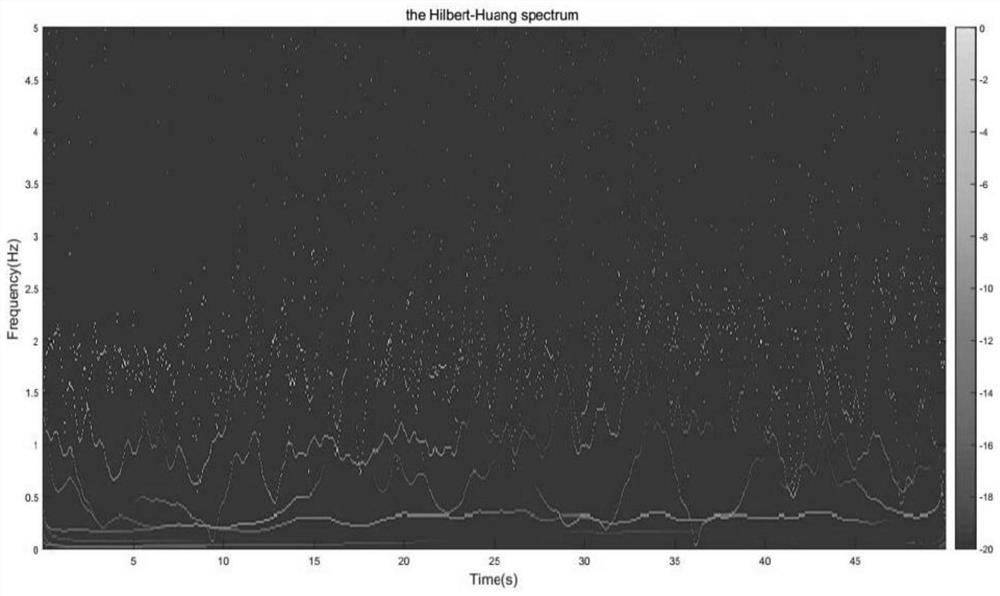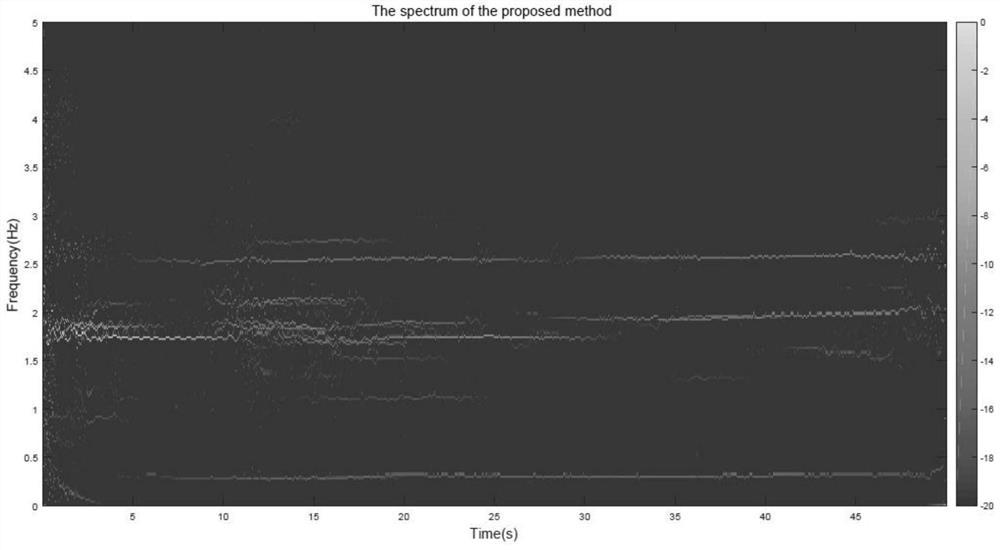Time-frequency analysis method of ocean structure based on moving average and energy pooling
A technology of ocean structure and moving average, applied in pattern recognition, instrumentation, calculation, etc. in signals, can solve problems such as modal aliasing, lack of mathematical reasoning, difficulty in obtaining the expression of intrinsic mode functions, etc., and achieve application value High and broad engineering application prospects, the effect of avoiding modal aliasing
- Summary
- Abstract
- Description
- Claims
- Application Information
AI Technical Summary
Problems solved by technology
Method used
Image
Examples
Embodiment Construction
[0067] In order to understand the above-mentioned purpose, features and advantages of the present invention more clearly, the present invention will be further described below in conjunction with the accompanying drawings and embodiments. It should be noted that, in the case of no conflict, the embodiments of the present application and the features in the embodiments can be combined with each other.
[0068] This embodiment proposes a time-frequency analysis method for ocean structures based on moving average and energy pooling, such as Figure 4 As shown, the verification idea of the present invention is to obtain its time-frequency diagram by analyzing the expression of the intrinsic mode function of the signal; for the intrinsic mode function, it is obtained by the complex exponential decomposition technology based on the moving average instead of the empirical mode decomposition method, It overcomes the shortcomings of the traditional Hilbert-Huang transform that is pro...
PUM
 Login to View More
Login to View More Abstract
Description
Claims
Application Information
 Login to View More
Login to View More - R&D
- Intellectual Property
- Life Sciences
- Materials
- Tech Scout
- Unparalleled Data Quality
- Higher Quality Content
- 60% Fewer Hallucinations
Browse by: Latest US Patents, China's latest patents, Technical Efficacy Thesaurus, Application Domain, Technology Topic, Popular Technical Reports.
© 2025 PatSnap. All rights reserved.Legal|Privacy policy|Modern Slavery Act Transparency Statement|Sitemap|About US| Contact US: help@patsnap.com



